Bog gardens: expert advice on how and where to create one in your plot
In our expert guide to bog gardens, we reveal how to enjoy an exciting range of foliage and flowers in a damp area of your garden


The lush, verdant foliage and bold flowers of moisture-loving plants give bog gardens a unique look that injects the garden with color and excitement. Planted in the right conditions, a bog border will attract a variety of wildlife, including beautiful damselflies and dragonflies, and a wealth of insects for birds. It also introduces a wide range of plants that you might not have grown before, including fabulous Asiatic primulas, which bloom in vivid colors during late spring and early summer.
One of the best examples of a beautiful bog is found at RHS Harlow Carr in North Yorkshire. Carr is the old Norse word for boggy place, and the iconic Streamside Garden is planted in the moist clay banks of a natural beck. As well as vibrant pink, orange, yellow, and purple primulas, the garden is a dense carpet of wonderful foliage (such as ferns, gunneras, and hostas) dotted with blue splashes of Himalayan poppies and the bright plumes of astilbes.
Recreate this waterside lushness in your own plot by constructing a bog border as part of your garden pond ideas this season.
What are bog gardens?
A bog garden is an area with very damp soil, where moisture-loving plants thrive. This may exist already in your garden, if water flows through it. It’s also possible to create a bog garden, and the side of an existing pond is the ideal spot because water from the pond can seep into the adjacent border, creating a manmade bog.
Creating a small bog bed is the easiest option because larger areas require hard landscaping ideas (such as a boardwalk) to allow access. Many bog plants bloom in mid spring, which can be a flowering lull, making a bog bed a great addition if your garden lacks color at that time of year.
In her book The Damp Garden, the late gardener Beth Chatto wrote: 'If damp gardening sounds like hard work I can assure you that, unless nature provides for you, initially it is. Both the careful preparation of the site and the subsequent management of the soil (ideally suited for the germination of weeds) require considerable effort, followed by skilful planting. But when it is successful I think it is possibly one of the most beautiful forms of gardening.'
The Water Garden (including bog beds) that she created at her iconic gardens in Essex involved adjusting the soil to resolve waterlogging and compacted layers. Bog plants relish dampness, but insist upon a modicum of drainage.
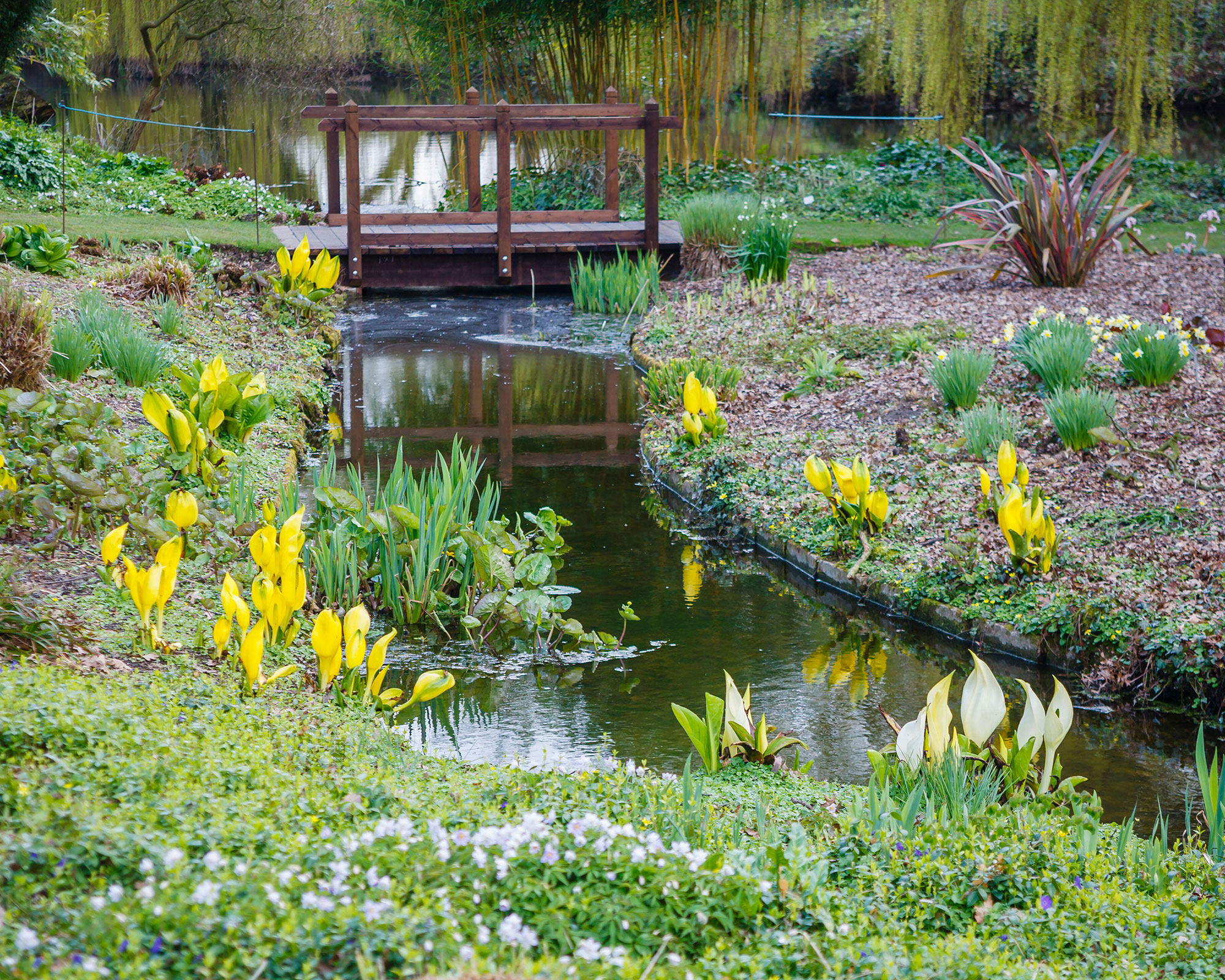
When is the best time of year to make a bog garden?
Late winter and early spring are the ideal time to create a bog garden. ‘In late winter and early spring, the plants are ready to start into new growth and will be putting down new roots,’ says Paul Cook, Curator at RHS Harlow Carr in North Yorkshire. ‘The rising soil temperature will help them establish.’
Putting plants in during spring also means the new bog garden will be ready for wildlife emerging from their winter rest, ready to make a home in the leafy paradise you’ve just planted for them.
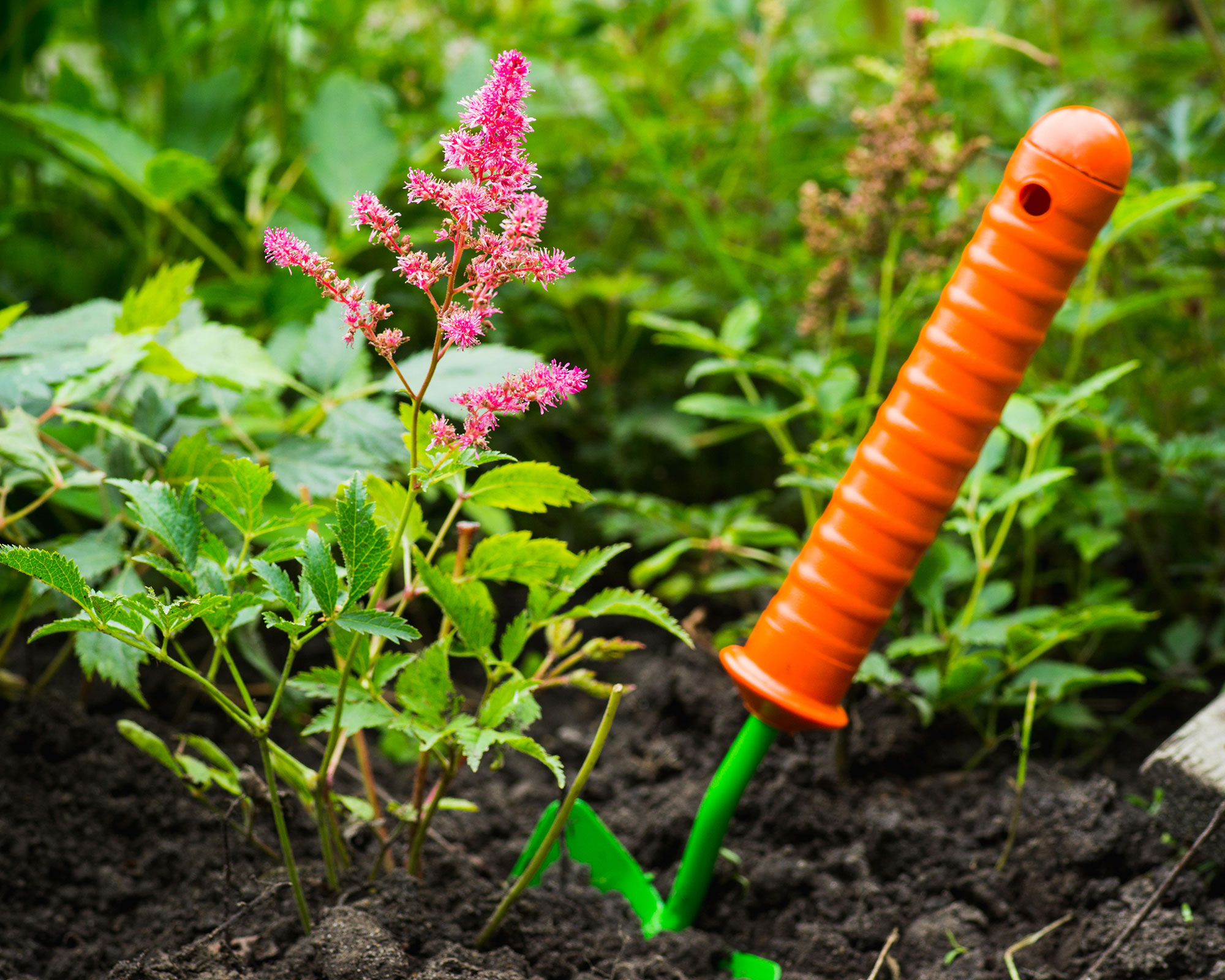
Where can you create a bog garden?
A sunny spot is required, since many bog plants like sunshine, and dragonflies (who love to sunbathe) are much more likely to feed and breed there.
The easiest site is alongside an existing water feature such as a pond or stream because the water can be fed into the bog border to keep it moist. However, it is possible to create a stand-alone bog garden without an adjacent water feature, as long as you’re prepared to install irrigation.
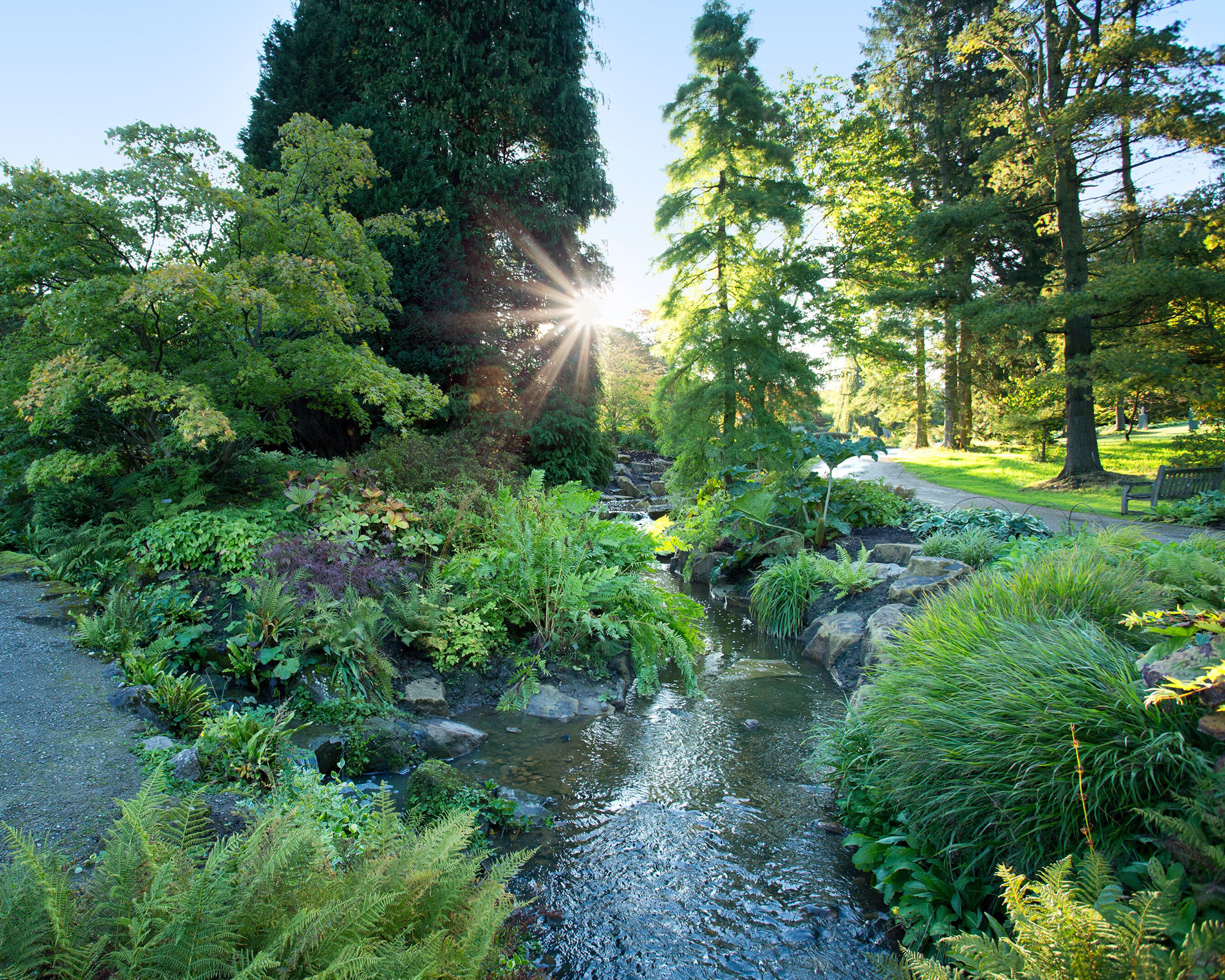
Do bog gardens need drainage?
Yes! Bog plants relish dampness, but insist upon drainage. Without it, the plants will suffer and the border will start to smell stagnant.
Before you embark upon a new pondside border, you should spend time observing and investigating the site to understand its specific conditions. Does water collect in puddles that don’t drain away? Does the wet soil have an unpleasant smell? If so, waterlogging is probably an issue.
Dig down deep into the soil to see what’s there. You may discover a solid layer that requires a machine digger. But if the soil isn’t compacted, you can get away with just forking in organic matter (such as compost) and grit, without the need for machinery.
Alternatively, if your soil type is particularly dry, steps can be taken to boost moisture by digging in organic matter (such as compost). This groundwork can be tiresome, but further down the line, when your bog garden is a riot of cheering color, it will be worth it.
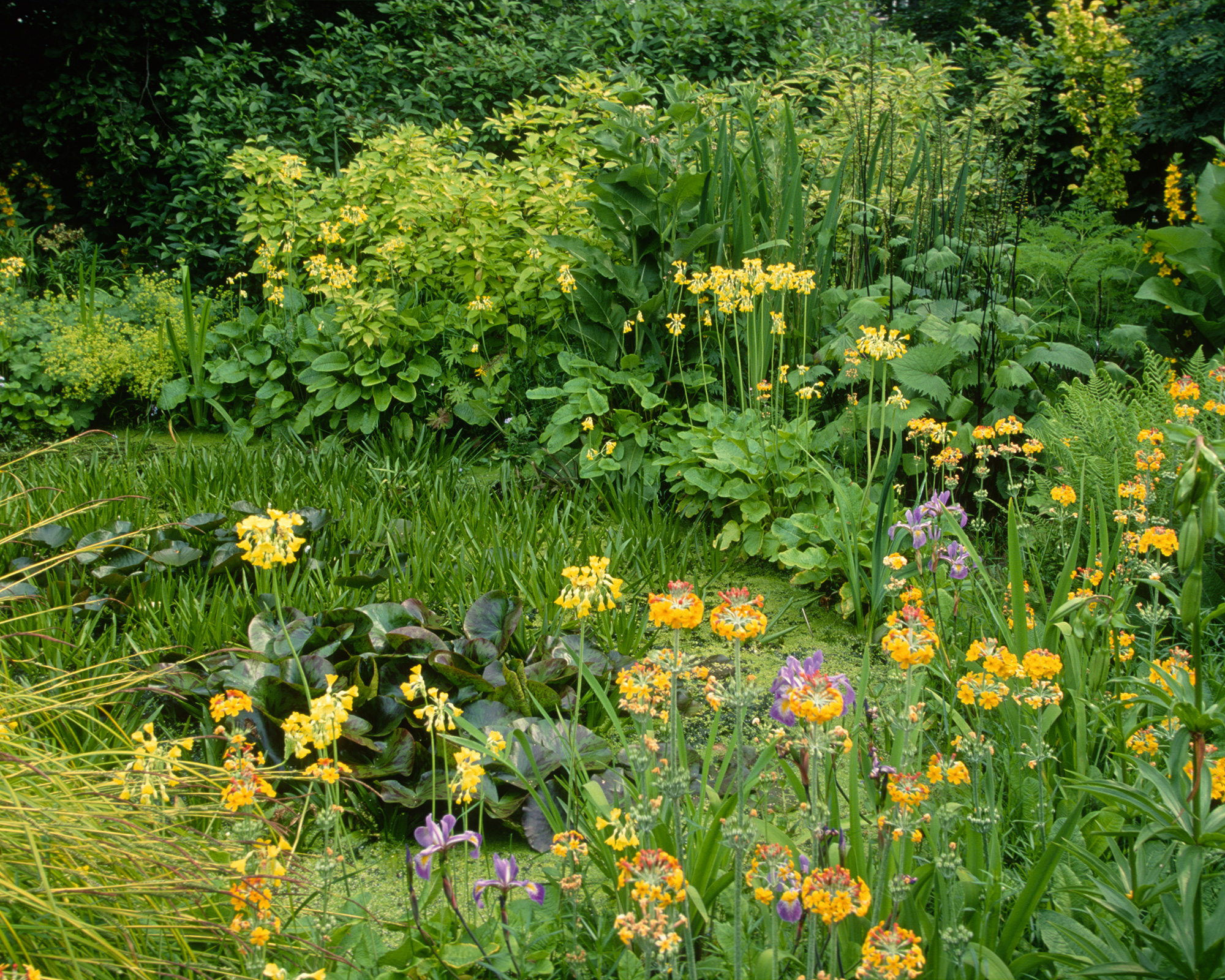
How to make a bog garden
Feeling inspired to create a bog garden in your own plot? Our step-by-step advice explains how to create one from scratch.
- Choose a site in sun, ideally beside a stream or pond. If the pond is in a sloping garden, choose the lower side.
- Investigate the site to discover what sort of soil you have and its specific issues, if any. For instance, it may be very compacted under the surface.
- Mark the shape of your bog garden and use a garden spade to dig the soil well without getting too close to the pond edge yet. Very compacted soil may require a rotavator, but do not dig deep into clay subsoil. Remove large stones and all weeds. It’s not a great idea to use chemical treatment, as it will harm or kill wildlife, especially if it seeps into the pond. If the area to clear is large, it’s best to lay down old carpet for a few weeks, which will cut off the weeds’ light supply and therefore kill them. There are lots more tips on how to get rid of weeds in our dedicated guide too.
- Remove some of the pond water on the day you’re going to construct the bog garden, to prevent it flowing into the area you’re working on.
- Leaving a 12in (30cm)-wide ridge between the pond and the new bog border (with the ridge 2in/5cm lower than the pond edge), dig the bog border to a depth of 18in (45cm), ensuring you keep the topsoil and subsoil separate.
- Rake and then cover with a 1in (2.5cm) layer of sand.
- Lay pond liner and perforate with drainage holes. ‘Drainage is important,’ emphasizes David Ward, Garden and Nursery Director at Beth Chatto's Plants and Gardens in Essex, ‘so make sufficient holes in the liner. Don’t skimp on the quality of the liner – use a butyl one, not black plastic.’ Tuck the new liner under the existing pond liner to prevent leakage.
- Spread a 2in (5cm) layer of grit atop the bog garden liner, followed by the subsoil. Then place the topsoil (mixed with a generous amount of organic matter, such as compost) over it. If you’re on clay, you might add some grit as well.
- Build a barrier of stones and mesh atop the ridge between the pond and bog garden to allow water in and prevent soil escaping out. Continue filling the bog garden with topsoil and organic matter until it’s the right level; then top up the pond with water. Water should now seep through the stone barrier into your new bog border.
- Plant a few days later, once the soil has settled, on a day when the ground is not frozen and cold weather isn’t forecast.

Do I need a leaky pipe in a bog garden?
A leaky pipe is a garden hose pierced with holes that can be placed in the bottom of a bog garden if it is not adjacent to a pond or if you live in an area where the summers are hot and dry.
The end of the pipe or hose needs to be on the surface, so you can pour water into it. ‘Using rain water or diverting rain water into the bog garden will help,’ says Paul Cook, ‘and there are some ingenious examples where downspouts from sheds have been used to fill water butts and the water butt then slowly feeds into a leaky pipe that trickles into the garden area to keep it moist.’
What is the best soil type for bog gardens?
Well-drained, nutritious soil is best for bog gardens. ‘Most ordinary garden soil can be used, if it is enriched with some organic matter, such as homemade garden compost, leaf mould, or council waste,’ says David Ward. ‘There is absolutely no need to use peat!’
The addition of organic matter not only boosts the nutrient content, it also boosts water retention and drainage, meaning there are lots of reasons to start composting at home so you have plenty to use in your bog garden.
Can you walk on a bog garden?
Only when absolutely necessary as it's very easy to compact the soil, which is not good for the plants.
The best option is to incorporate some attractive stepping stones ideas into your scheme, so that you can move around easily, and in a larger bog garden, consider installing some decking ideas in the form of a boardwalk.
Avoid working in the bog borders after or during wet weather, and when you do head in, lay down planks or boards of wood (as you might in the vegetable patch) because they will spread your weight out.
Venturing along such planks with a walking stick is helpful to those of us who are rather uncoordinated and therefore prone to losing balance and tumbling into the bog.
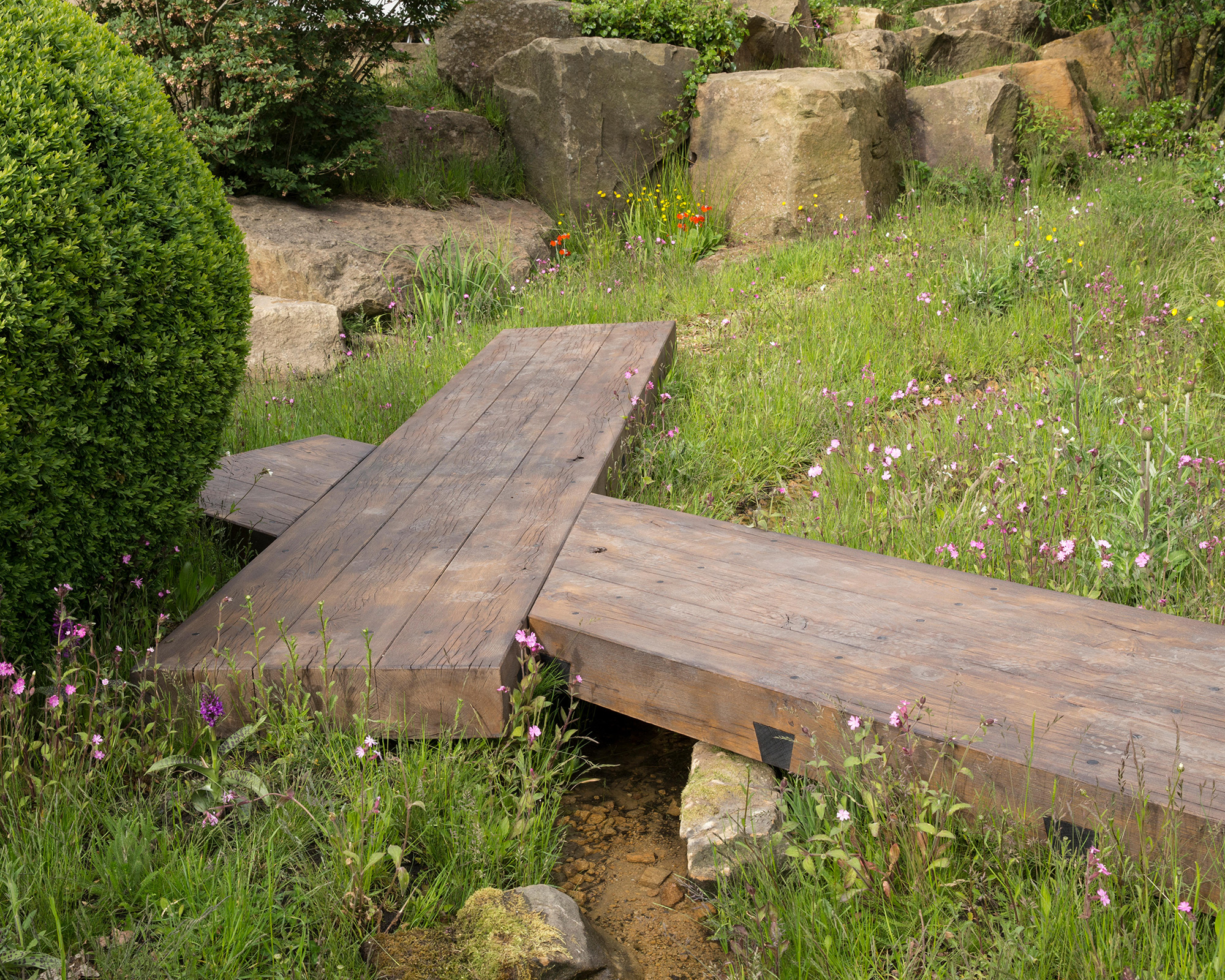
Are bog gardens good for wildlife?
Wildlife ponds are a wonderful addition to any plot, and a bog garden can further boost their benefits. The stars of the show will be dragonflies and damselflies, who add some enchantment to the garden when they dart around catching insects in the summer sun.
’By creating a bog garden, you are adding a different habitat to your garden, which will attract a more diverse range of wildlife,’ says David Ward. ‘If you want dragonflies, remember that they are predators, so grow as many insect-attracting plants as possible, such as lythrum, echinacea, rudbeckia, and persicaria. Most insects love the sun, so bear this in mind when positioning your bog garden, and include flat rocks and logs for basking.’
Why not think about including some wildlife pond edging ideas in your plans too?
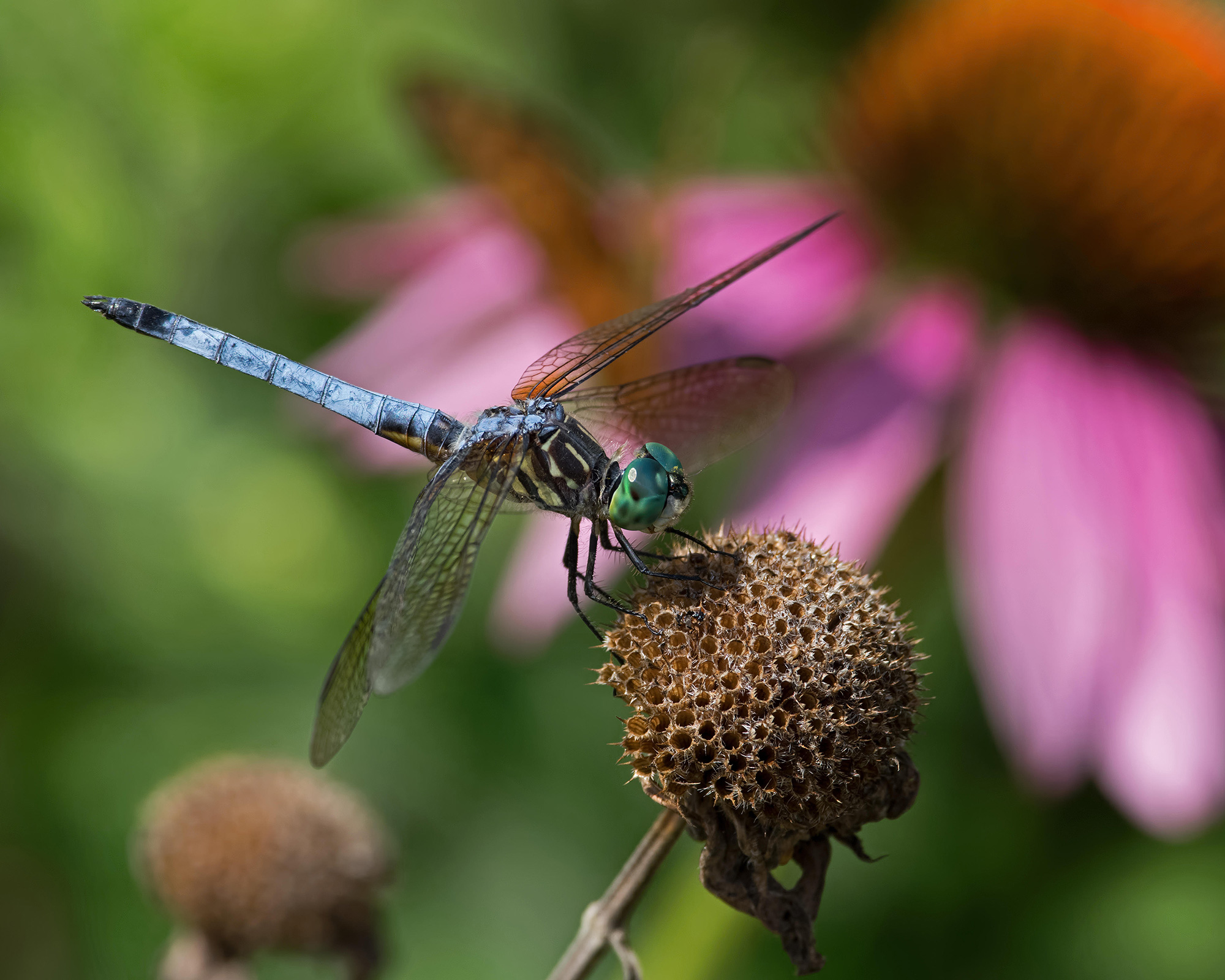
How do you make bog gardens look good?
- Extend its edges into other borders, so that it merges with them, rather than having an abrupt stop. Use plants that are happy with a bit of moisture (such as ferns, heleniums, persicaria, and cranesbills) to tie a bog border and a regular garden border together.
- Add a boardwalk if the bog garden is a fair size. As well as making an attractive feature that allows you to get up close to the plants, immersed in them at their flowering peak, it will discourage pets from padding across the bog.
- Place it beside water to create a wonderful natural look that adds tranquility to the garden. A pond or rill without dense planting around it can look too artificial for those who love the soft, informal style of wildlife garden ideas.
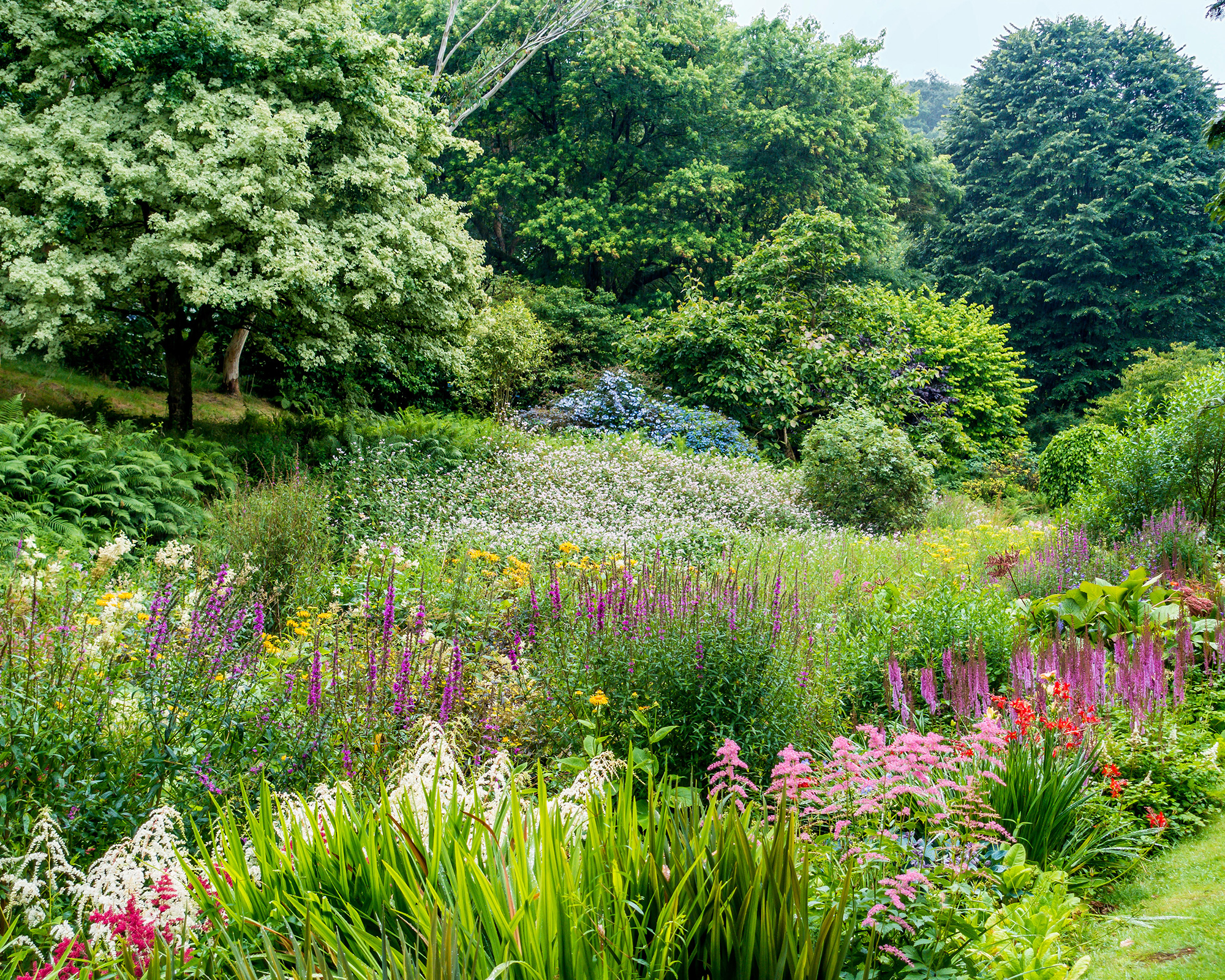
How do you maintain a bog garden?
- Even in a small garden pond, the water level of the pond must be maintained by you topping it up in very hot weather, otherwise the bog border beside it will dry out.
- Mulch annually (for example with compost and grit) to improve soil nutrition, moisture, and drainage. Mulching also keeps the roots cool during high summer, as well as suppressing weeds.
- Don't be too tidy, says David Ward: ‘Let your bog plants die back naturally and allow fallen leaves to settle – this all adds to the organic content of the soil.’
- Experiment with this new style of gardening, and you will become competent as you go. ‘We have had the experience of many years of trial and error to work out what plant likes a specific area, so don’t hesitate to give different moisture-loving plants a try and learn from successes and mistakes,’ encourages Paul. ‘We are all learning and every year is different.’
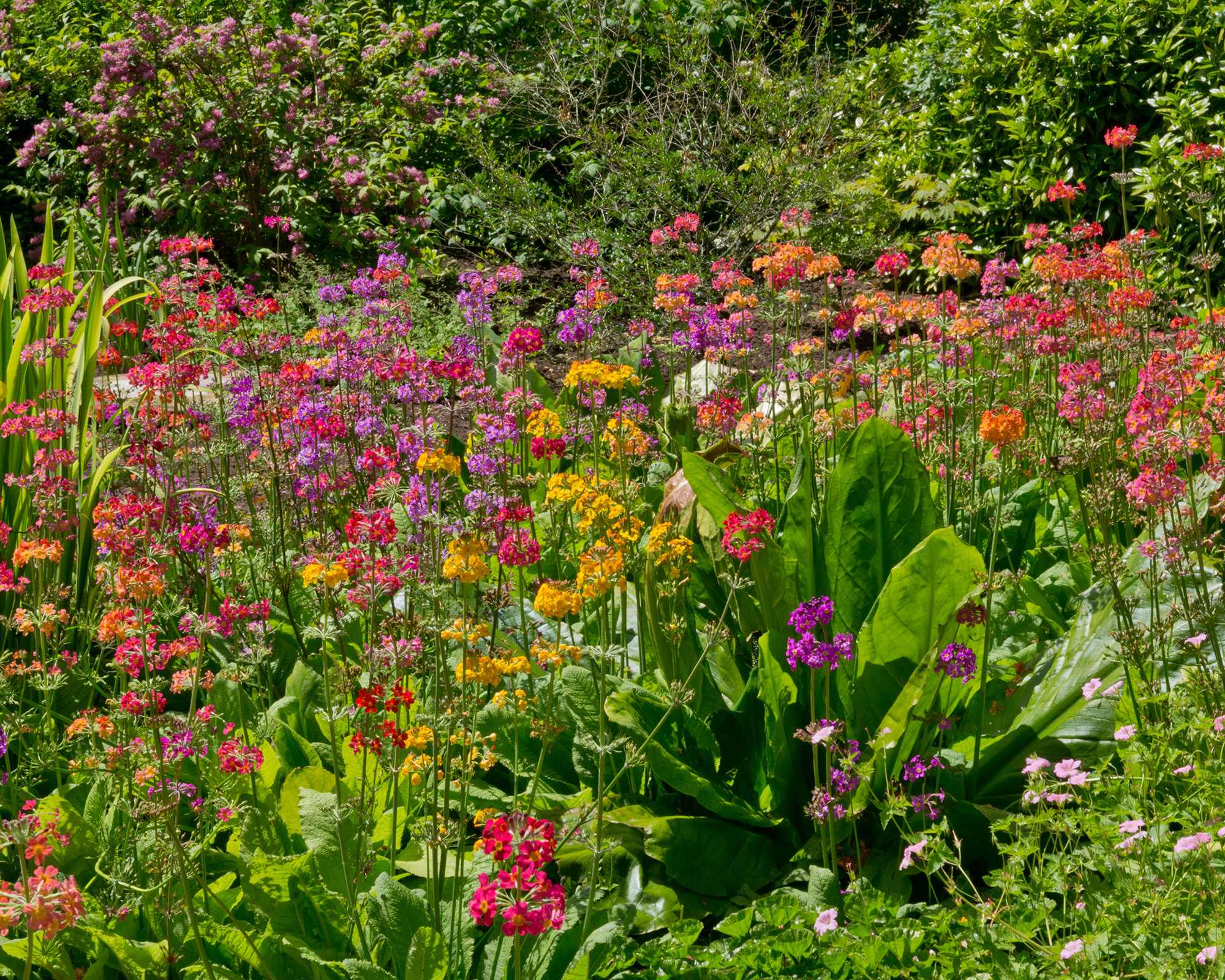
Problems with bog gardens
- Drainage: This is the number one error people make with bog gardens. If it is not well drained, plants can rot in stagnant soil that perfumes the whole garden with an offensive odour on hot days.
- Fussy plants: Including too many tricky plants can be a mistake if you’re a bog garden beginner. For instance, opt for bulletproof yellow flag iris (Iris pseudacorus) to start with, rather than the very beautiful but very fussy Japanese Iris ensata, which is happy submerged in summer, but insists on very good winter drainage.
- Elbow room is important: ’Visit bog gardens to see how big some plants can get,’ suggests Paul Cook. ‘Bog plants are vigorous and strong growing if they like their conditions, so don’t overplant.’

Can you create a bog garden in a container?
Yes, as long as the trough, tub, or planter does not have very good drainage. It must have some drainage holes, however, otherwise the plants will not thrive, and it will start to smell! It must be watered regularly to ensure it never dries out, especially in a heatwave.
Colorful moisture-loving plants, such as lobelia and astilbe, look great mixed together or try an elegant planter of white arum lilies for a container gardening idea with a difference.
Creating a water feature in a container can be a brilliant budget pond idea too.

For the past 18 years, Beth has worked for and contributed to a number of leading magazines in the UK, including Real Homes, Ideal Home, Period Living, Grand Designs and Good Homes amongst others. Now the editor of Gardeningetc.com, Beth's attention is firmly outdoors. Her own garden is a really important part of her family's home, and she loves spending time tending to the veg patch or entertaining friends and family at a summer BBQ or alfresco pizza night.
